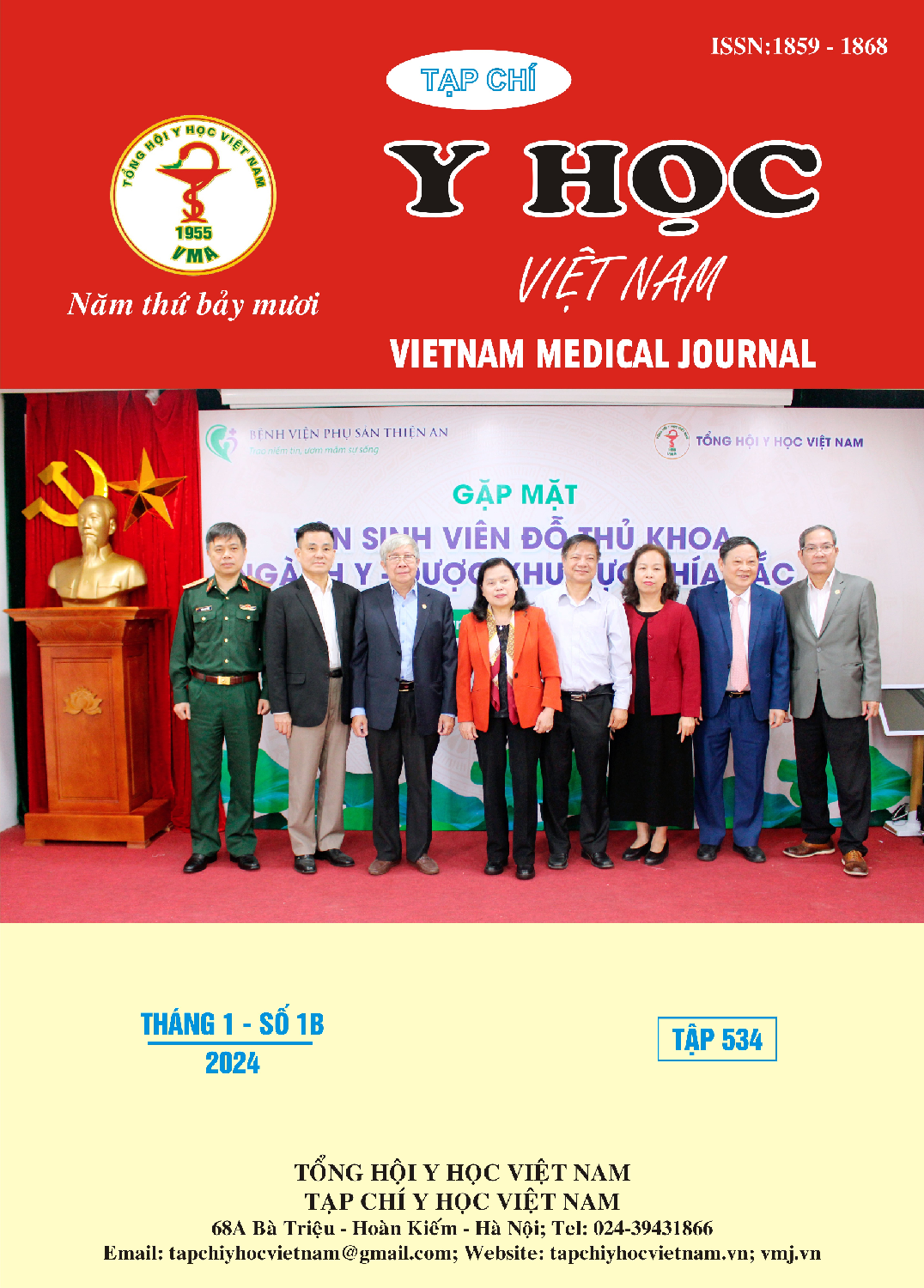EVALUATION OF THE RESULT OF PARTIAL HIP REPLACEMENT FOR INTERTROCHANTERIC FRACTURE IN ELDER PATIENTS AT BAC GIANG GENERAL HOSPITAL
Main Article Content
Abstract
Introduction: An intertrochanteric femoral fracture is a fracture in region 3 of the upper head of the femur. Common in the elderly, women > men. Partial hip replacement for intertrochanteric in the elderly has become more widely applied in recent years. Because this method help the patients access early mobility and to limit the complications. Objective: Evaluate the result of partial hip replacement for intertrochanteric fracture in elder patients. Materials and Methods: Research method: descriptive study. 22 patients with intertrochanteric fractures underwent partial hip replacement at Bac Giang General Hospital from May 2021 to May 2022. Results: The average age is 86,5 ± 3,8 tuổi. female/male ratio is 2,67/1. Fracture by home accident: 20/22 (84%). Results when the patient is hospitalized: VAS pain scale: Average is 3.8 ± 1.15. Early wound healing: 100%. Volume of blood transfusion: Average was 425.4 ± 180 ml, 7/22 patients did not require blood transfusion (31.82%). No patient had a hip dislocation during their stay in the hospital. Long time results: Assessed according to the Harris scale. Good and very good: 21/22 patients (95,45%); Average: 1/22 patients (4,55%); Poor: 0%. Conclusion: Bipolar partial hip replacement is a good choice for elderly patients with osteoporosis and unstable intertrochanteric femoral fractures, helping patients with good pain relief, early rehabilitation time, convenient for treatment, care and improvement. patient's quality of life, avoiding complications due to prolonged bed rest such as ulcers, pneumonia, urinary tract infections... However, it is necessary to carefully assess the patient's condition and coordinate synchronously between surgeons, anesthesiologist, internal medicine physician, rehabilitation physician.
Article Details
References
2. Donald D. Price, Roland Staud và Michael E. Robinson (2012). How should we use the visual analogue scale (VAS) in rehabilitation out comes? . J Rehabil Med, 44 (9), 800-804.
3. Trần Trung Dũng (2014). Các thang điểm đánh giá trong chấn thương chỉnh hình. nhà xuất bản y học, 43-45.
4. Chang Hyun Cho, Sang Hyup Yoon và Shin Yoon Kim (2010). Better Functional Outcome of Salvage THA than bipolar hemiarthroplasty for failed intertrochanteric Femur Fracture Fixation. Orthopedics, volume 33 (10), 1-20.
5. Cankaya Deniz, B. Ozkurt và A. Y. Tabak (2013). Cemented calcar replacement versus cementless hemiarthroplasty for unstable intertrochanteric femur fractures in the elderly. Ulus Travma Acil Cerrahi Derg, 19 (6), 548-553.
6. Nguyễn Đình Phú và Phan Thế Minh (2015). đánh giá bước đầu kết quả điều trị gãy mất vững liên mấu chuyển xương đùi ở bệnh nhân lớn tuổi bằng phương pháp phẫu thuật thay khớp háng lưỡng cực chuôi dài. hội nghị thường niên lần thứ XXII- Hội chấn thương chỉnh hình Tp. Hồ Chí Minh, 115-120.
7. Võ Thành Toàn và Ngô Hoàng Viễn (2016). Điều trị gãy liên mấu chuyển xương đùi ở bệnh nhân lớn tuổi bằng phương pháp phẫu thuật thay khớp háng lưỡng cực chuôi dài tại bệnh viện Thống Nhất. hội nghị thường niên lần thứ XXIII- Hội chấn thương chỉnh hình Tp. Hồ Chí Minh, 112-115.
8. Young Dae Jeon và So Hak Chung (2015). Bipolar Hemiarthroplasty for Unstable Intertrochanteric Femur Fracture in Patients over the Age of 80 Years: Comparative Analysis between Cementless and Cemented Stem. journal of the Korean orthopaedic association, 50 (6), 483-490.
9. Nguyễn Đình Hiếu (2018). Đánh giá kết quả điều trị gãy liên mấu chuyển xương đùi ở bệnh nhân trên 70 tuổi bằng phương pháp thay khớp háng bán phần chuôi dài không xi măng. Luận văn thạc sỹ Y học, Đại học Y Hà Nội
10. Lê Ngọc Hải (2020) Nghiên cứu tình trạng loãng xương và kết quả phẫu thuật thay khớp háng Bipolar điều trị gãy liên mấu chuyển xương đùi ở người cao tuổi. Luận án tiến sỹ Y học, Học viện quân y. Tr 119


